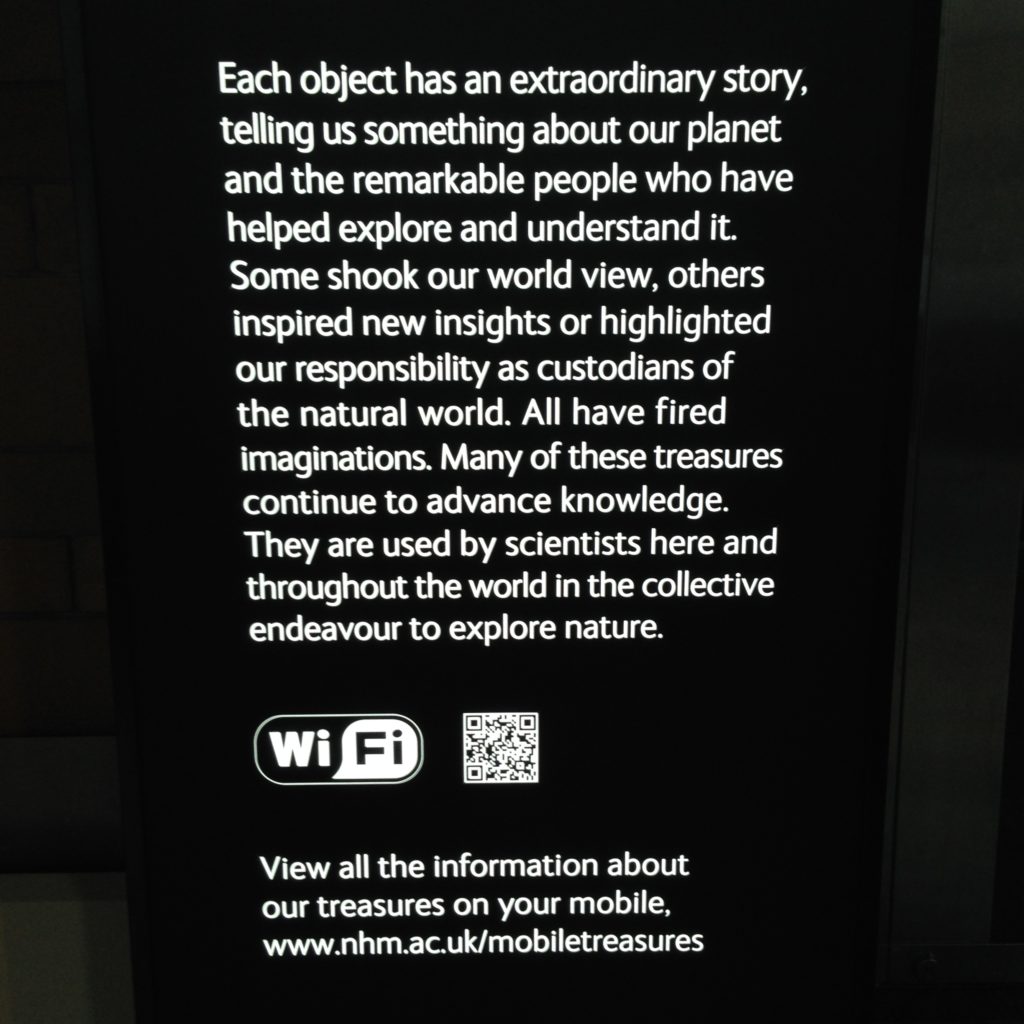Lecture Benches: Audio in Museums
I’ve decided to call this a lecture bench. Sit down, select your content, listen while you look upon the objects described. Two birds with one stone: learn something, and have a rest. (Hey: those floors are really, really hard. Everyone’s feet need a rest in big museums!)

It’s an audio brochure controlled by a touch screen and delivered through a set of headphones.

This is the high-tech version, I discovered later, because of the touch screens and the fancy headphones. (Is it only me, or does sharing headphones seem a little…intimate? Headphones seem like a personal item to me, for the most part. I’d rather plug in my beats, but maybe that’s just me.)

This is, I think, the older version of the lecture bench. You hold the big plastic handset to your ear to listen whilst sitting on this lovely leather bankette. No touchscreen control, you’ll notice. Just some knobs.
Museums are unique in that people come to see their stuff, and if their stuff were converted entirely to digital stuff, no one would visit anymore. Because the point really is to come see the stuff. Okay: maybe museums aren’t that unique, because a lot of people think the very same thing is true of libraries. But libraries don’t curate in the same way that museums do. Frankly I think that’s a bit of a tragedy. What these audio benches attempt to do is bring different media into the space to sit alongside the more physical objects. People don’t go to museums to listen to things, they think, but of course if someone’s there telling you all the interesting stories behind the objects you see, you absolutely are there to listen.

Here’s a very stripped down (and far less comfortable) version at the Wellcome Collection, with a telephone handset rather than headphones. What’s most interesting about this one to me is that the surface they’ve left for you to sit on sort of makes it look like you’re part of the exhibit when you sit down on it. As if you’re there to be looked at, with a label on the wall over your head. Not quite as inviting, obviously. But interesting.

At the Natural History Museum, they’re trying a similar thing through QR codes. You can look at the skulls and minerals and models of ancient animals while you’re there, but they want to knit more context and more information into them. There is so much information, and it seems like everyone is trying to find ways to knit it into a physical experience. You can’t write entire monographs on the walls. People won’t read that much text. It’s very interesting to see the variety of ways curated spaces are trying to bring digital media into their midst.